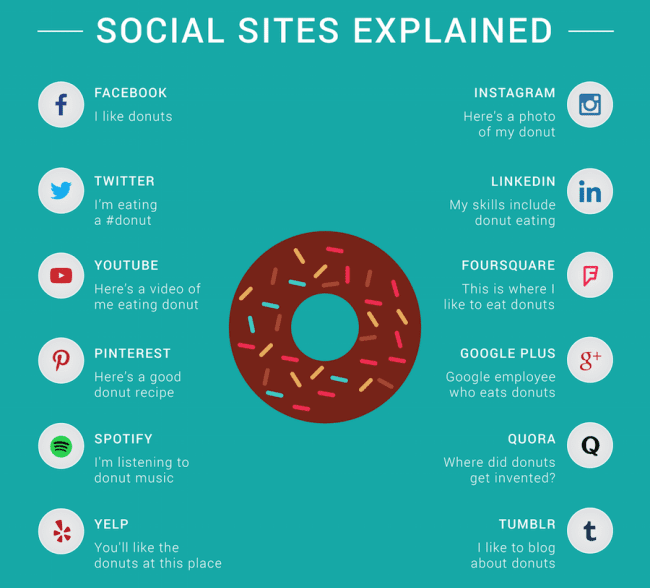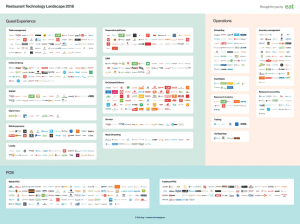It’s a fast moving landscape when it comes to digital marketing and social media in particular. Where should you focus and put efforts in order to get the best bang for your buck? Here are seven useful tips to consider:
1. Know why you are there
I recently asked a hotelier why they had a Twitter account, and what purpose it served in the overarching marketing and communications strategy. The answer? “We’re there because it seems like we should.” That’s not a reason.
Social media acts as content amplifiers, reaching audiences with promotions, photos or videos that enhance customer service, sell special offers or get community engagement over a given topic. But what marketing purpose does it serve for YOUR brand? It can be about improving customer service, helping brand awareness, getting excitement over a product launch, etc. So make sure you know why you are active on Facebook, or Twitter, or Instagram, or whichever social outlet where you have an account.
2. Don’t spread yourself too thin
A classic mistake I see to this day: agencies or companies that have accounts on almost every possible social media there is. With. No. Activity. Or perhaps even worse, no engagement at all.
Managing communities, looking after digital strategies and implementing strategies into tactics is very time consuming, and for many – if not most – small and medium businesses, it is not a core function. I get that. So you must make some difficult choices. Do you really need to have an account on Twitter? How active are you really on Pinterest? How often do you post new videos on that YouTube channel anyway?

It’s better to manage one or two social accounts very well than to have five or six accounts with random content and irregular postings. I cringe when I see an Twitter account where the latest tweet dates back to April 12, 2013….
3. It’s not free
Perhaps one of the biggest misconceptions about social media is that it’s free. It’s not free. As Jay Baer would say, it’s just a different kind of expensive. It takes time, and it takes resources to manage properly. Yes, it’s free to open an account, but you not only need some money to get some traction on key platforms such as Facebook or Instagram, you will also need to create content: texts, photos, videos. And someone will need to publish at the right time, targeting the right audience. Then answer comments and manage flow of conversations. Thus, it’s not free.
4. Define KPIs and measure
Do you know what success looks like for your social media marketing? You won’t ever be able to tell if you are moving the needle if you don’t even know what the key performance indicators (KPI) are for your efforts. These can range from:
- Growth of your social account
- Referral traffic sent from social media to your website
- Conversions on your website, coming from social media
- Engagement rate on your page: like, comments, shares, reshares, tags, etc.
- Customer service issues resolved or addressed
- Reach (organic / paid) of content
These KPIs should be linked to organizational goals and business objectives, and measured regularly, i.e. monthly or quarterly. For more on this, read: KPIs for your social media dashboard.
5. Consider paid tactics
As much as we’d like to think we can get our video to go viral, or that cute picture to reach a great audience, the average post won’t perform that well organically in an environment where content shock is occurring, and information overload is a reality. Thus, you need to consider a line in your budget for paid social media tactics. These include:
- Promoting a given post, tweet, video or picture
- Remarketing, getting users of your website to return through ads pushed in the social media newsfeed
- Facebook ads getting users to click on a given URL through photos or compelling copy with exclusive offers or promos
- Twitter or Linked ads with a custom message, targeting niche audiences on these platforms

6. Cross-promote
Too often, we tend to think of social media in a silo, while email marketing is in another, traditional media in a different corner, and the website is perhaps a stand-alone department. Truth is, they should all work together as part of your digital ecosystem.
For that next contest, why not send the details and conditions through your regular newsletter, pushing subscribers to read all the details on your Facebook page. And the contest itself? Make it about pictures taken on Instagram, with a specific hashtag, with a “Pic of the Day” being put online daily on your website. In other words, use various social media and communications tools together, rather than in competition, or worse, in isolation.
7. Define accountability
All that is fine and dandy, but at the end of the day, who is accountable for your actions on social media? Make sure you have at least one champion who has clear objectives defined, if possible tied to year-end performance review. There can certainly be various people active on social media accounts, especially for bigger organizations. But if nobody is accountable, then it becomes a task folks do whenever there is slower moment, or “if I have time”, which is quite seldom.
One last tip: you want your social media strategy to really work? Make sure the person accountable is high-ranking within the organization, i.e. Owner, General Manager, C-Level, etc. The higher the level of ownership and accountability, the better the odds of success for your social media initiatives.


















